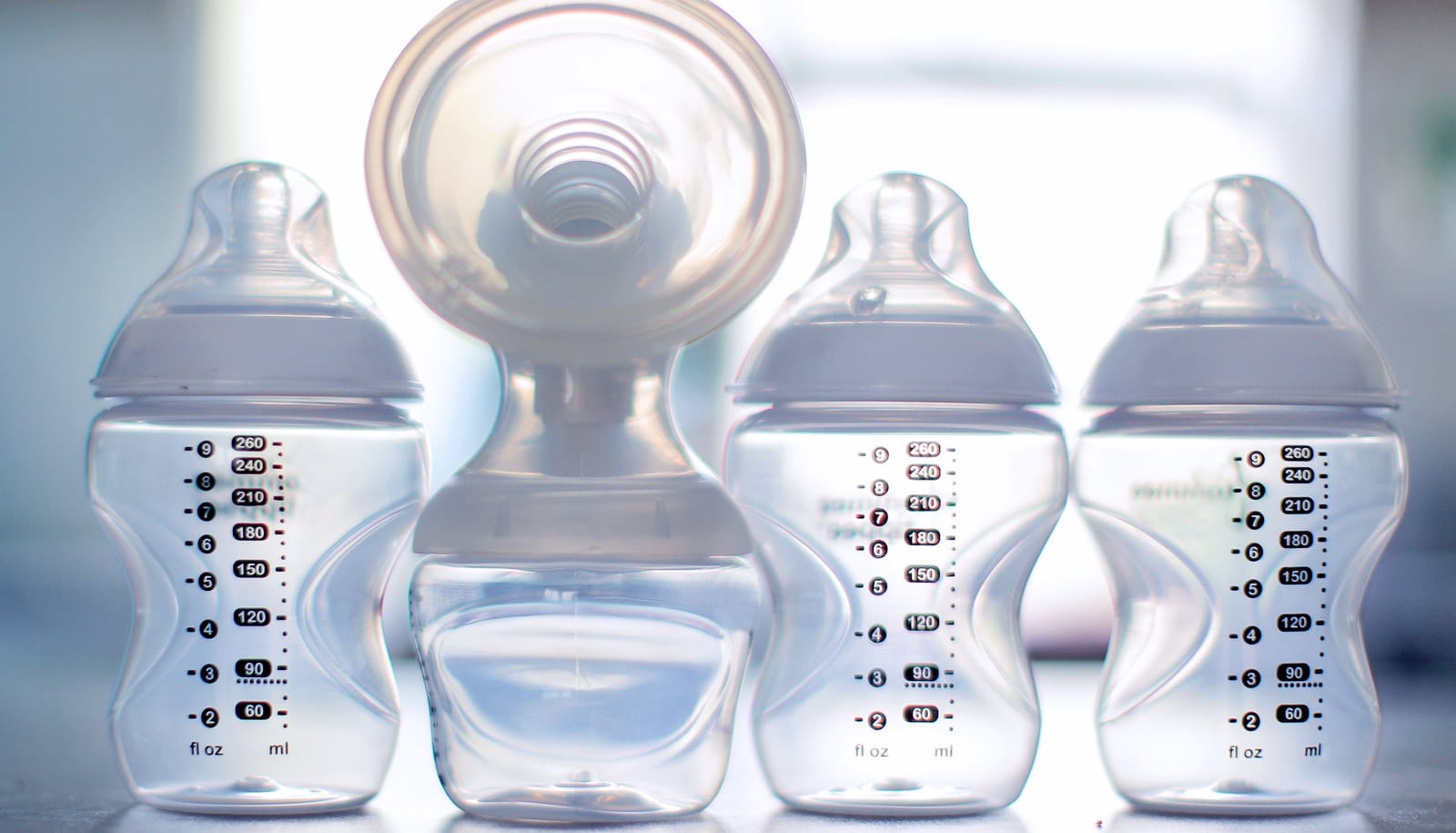
"When you dig into the evidence about the health benefits of breastfeeding versus a high-quality formula, it's really, really sparse," Emily Lawler says. (Credit: Getty Images )
Push to promote breastfeeding also has costs
"...the US has really focused on pushing breastfeeding as a goal, but we have done that without thinking through all of the relative costs..."
A rise in breastfeeding comes at expense of mothers’ careers, a study finds.
Breast is best, according to the campaign launched by the World Health Organization and the Centers for Disease Control and Prevention. But regulations encouraging breastfeeding may come at a steep price, according to the new research.
The study finds that state hospital regulations aimed to encourage breastfeeding, such as requiring a lactation consultant on staff, increased the likelihood that new mothers would start breastfeeding by almost 4%.
The regulations also increased the probability that the women continued breastfeeding through the first year of their children’s lives by as much as 7%.
However, mothers who chose to breastfeed significantly increased their time spent on child care, leading many to reduce their work hours, reduce their positions to part time, or leave the workforce entirely. And that may cause substantially lower wages and earnings down the line.
“These types of policies enable women who would like to breastfeed who previously did not have sufficient support or information to be able to do that,” says Emily Lawler, coauthor of the study and an assistant professor in the University of Georgia’s School of Public and International Affairs. “The bigger picture is that the US has really focused on pushing breastfeeding as a goal, but we have done that without thinking through all of the relative costs of that decision.”
One of the biggest costs of breastfeeding, the study found, is loss of time.
During the first few days after birth, babies can eat as often as every hour, according to the CDC. As they get older, they still require eight to 12 feedings in a 24-hour period over the first six months of their lives.
And many breastfeeding organizations suggest women who begin pumping breast milk should do so every couple of hours. On average, pumping takes 15 to 20 minutes, not including the time spent bottling milk and cleaning the machine’s parts after each session.
The researchers found women with infants reduced their labor force participation by up to 3%.
“Breastfeeding is a uniquely gendered activity, and it causes women’s time to shift away from formal work,” Lawler says. “Meanwhile, these breastfeeding policies don’t cause anything to really change for dads. They don’t work more after the baby is born, and they also don’t work less.”
Most states don’t have this type of hospital policy to promote breastfeeding. Only 16 states had regulations in place during the study period, and the requirements vary greatly.
The most common guidelines require all new mothers be informed of the benefits of breastfeeding, that hospital staff be regularly trained on initiation and support of lactation, and that there be a lactation consultant on staff.
The researchers relied on data from the National Immunization Survey-Child, a nationwide study focused on child health and vaccination rates, to compare the effects of these policies on breastfeeding rates.
They examined the effects of the policies using data from the American Time Use Survey, a national study by the US Bureau of Labor Statistics focused on how people divide their time among work, child care, volunteering, and more, and the Current Population Study, a comprehensive body of labor statistics data from the Bureau of Labor Statistics.
Breastmilk is considered the gold standard of infant feeding by most, if not all, health organizations.
Previous research found that breastfed infants have lower risks of skin rashes and some gastrointestinal issues.
“When you dig into the evidence about the health benefits of breastfeeding versus a high-quality formula, it’s really, really sparse,” Lawler says. “In general, women who breastfeed look different from those who don’t. They tend to be higher educated, have higher incomes, and can invest in their children in a way that non-breastfeeding women may not be able to.”
Those factors, the researchers argue, make it hard to determine whether the health benefits attributed to breastfeeding are purely due to breast milk and not some other confounding factors.
“This study is the first piece of evidence that we have on what the costs of promoting breastfeeding and encouraging people to breastfeed look like for maternal employment and work,” Lawler says. “I don’t think we should view these findings as a signal that breastfeeding is not worth it because it has these costs. But these costs are important to acknowledge and to take into account when we’re thinking about implementing policies like paid parental leave.
“Policies that provide women with paid leave can be a really important way of enabling them to make the decision to breastfeed while also not harming their career trajectory in the long run.”
The study appears in the American Economic Journal: Applied Economics .
Source: University of Georgia
The post Push to promote breastfeeding also has costs appeared first on Futurity .
Share this article:
This article uses material from the Futurity article, and is licenced under a CC BY-SA 4.0 International License. Images, videos and audio are available under their respective licenses.
Related Articles:
Easier breastfeeding at work benefits productivity
Nov. 14, 2019 • futurityPaid family leave benefits go beyond the workplace
March 16, 2022 • futurityLinks/images:
- https://www.futurity.org/women-earnings-baby-2907272/
- https://www.futurity.org/paid-parental-leave-california-2082102-2/
- https://dx.doi.org/10.1257/app.20220201
- https://news.uga.edu/hospital-regulations-spur-an-increase-in-breastfeeding-but-at-what-cost/
- https://www.futurity.org/cost-of-breastfeeding-careers-2981372-2/
- https://www.futurity.org


